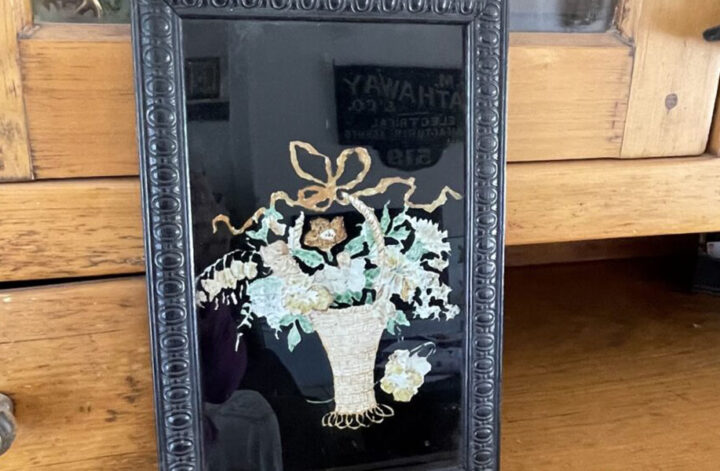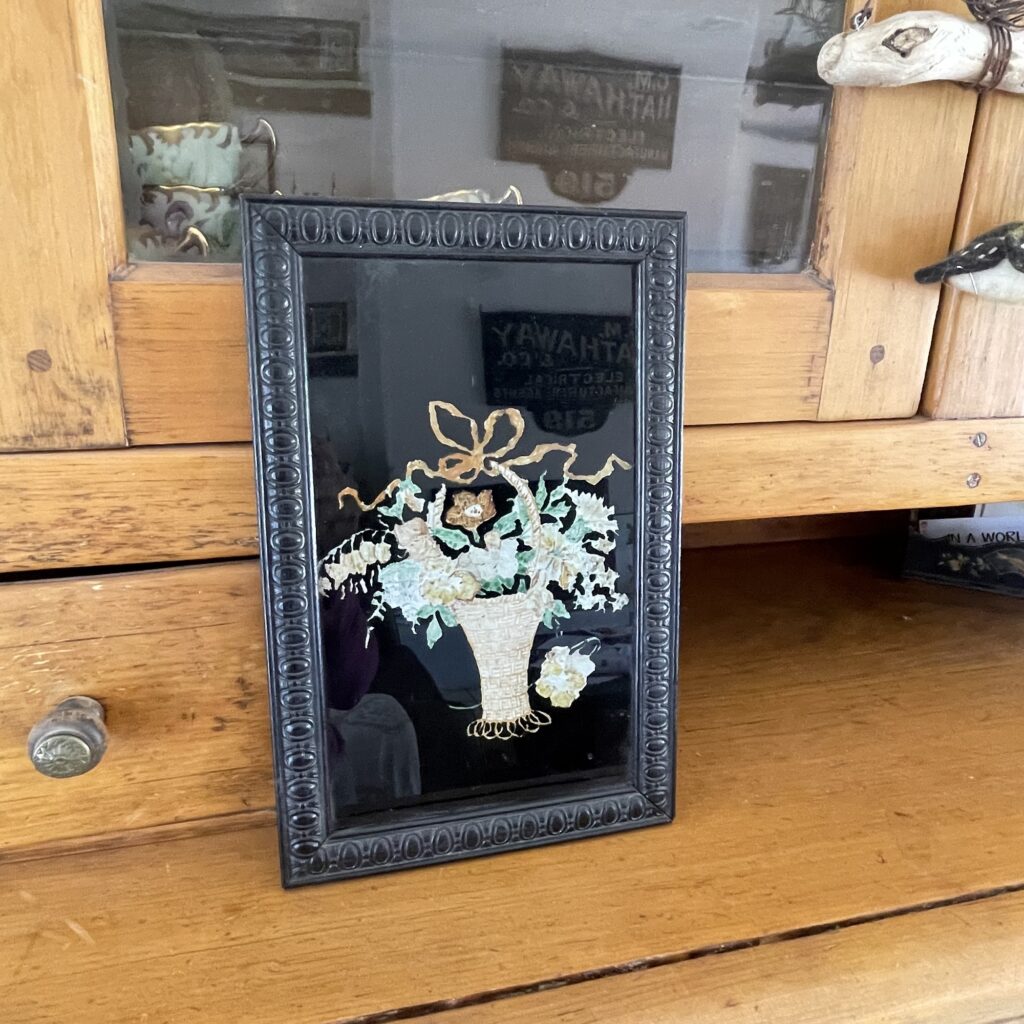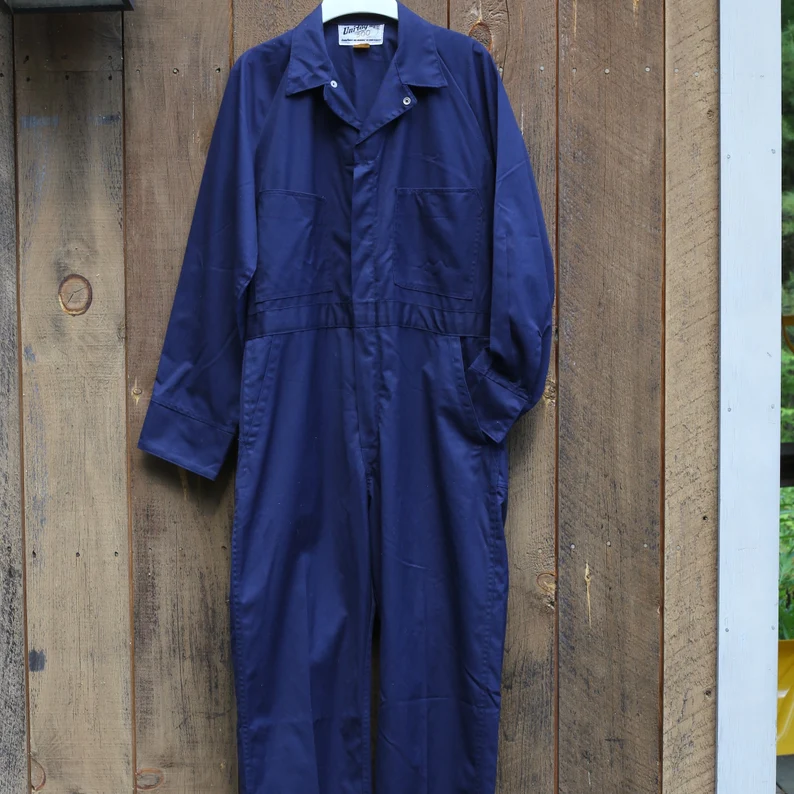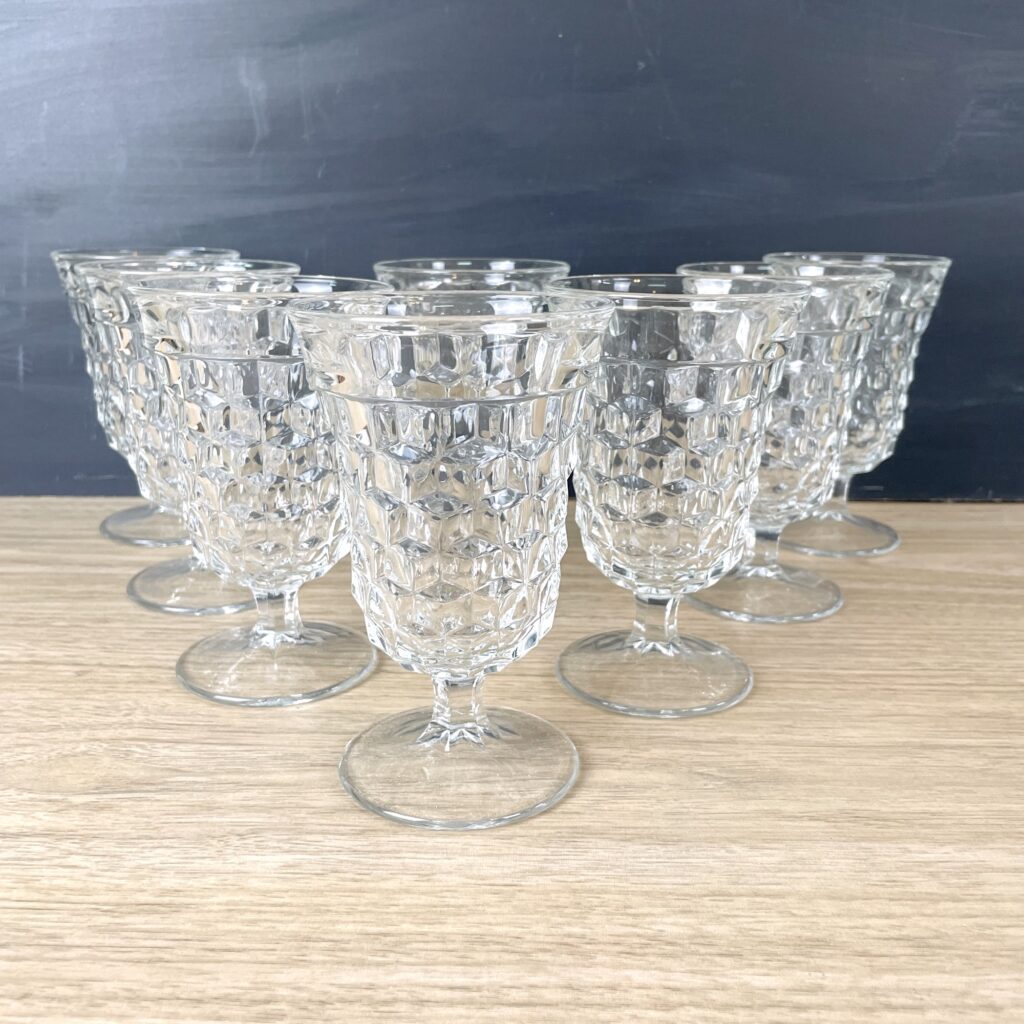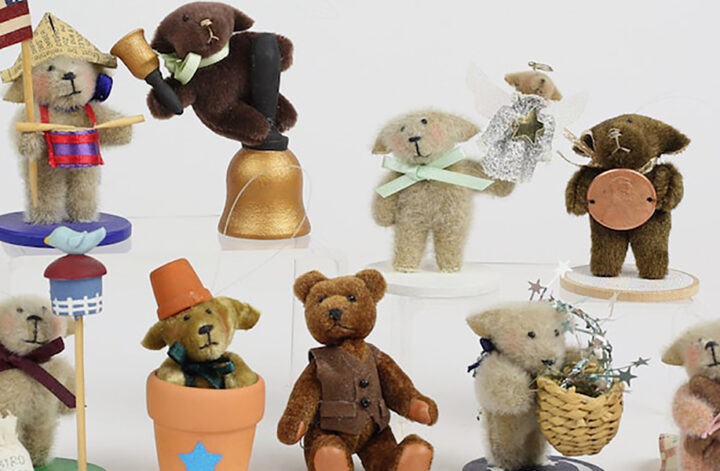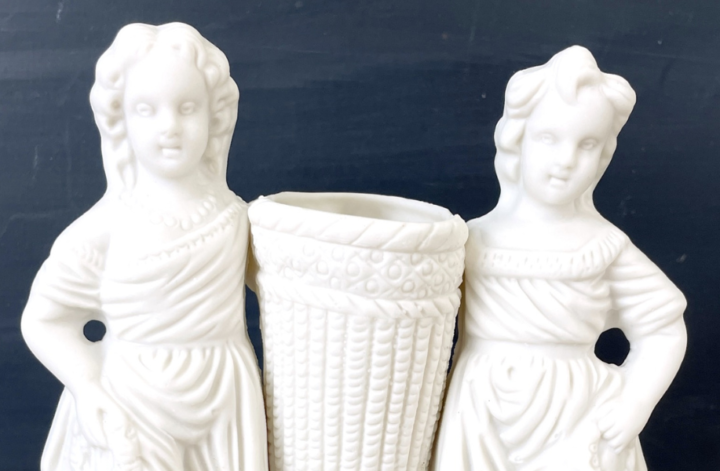Vintage art likes to keep secrets, but you can sometimes expose them. The catch is that you may have to take the art out of the frame to find it. Luckily, that wasn’t the case with the framed reverse painted tinfoil art in this week’s fresh to market vintage because the previous owner discovered the secret when they had the piece reframed and passed along the info. And that secret, it’s a beauty.
It can be daunting to remove art from frames, particularly professionally framed pieces. You feel like you’re ruining something. But trust us, you aren’t. Sometimes you don’t have a choice; if a piece has slipped in the matting, if a bug has wormed it’s way under the glass or if the frame is too damaged to be worthwhile you have to take action. But other times, you want to take it out to clean the glass on the front but it feels overwhelming. Go ahead. You can do it.
Older pieces may be framed with simple brads hammered into the frame. Pull those and the art comes out. Clean up, put the art back and simply replace the old brads with new brads and tap them into the frame gently with a small hammer. Later pieces might be held in the frame with framer’s points. No problem, if the frame is wood, you can replace the framer’s points with brads. If it’s metal, you can usually fold the tabs/framer’s points back and work the art out. New metal frames are often held together with hardware on the back corners, unscrew a couple of those and screw them back together when you put the art back. See, not a big deal at all.
What have we found when we have taken apart framed art? In one case, the cardboard backer behind the art was a vintage screen printed carnival poster from Queens, NY. In another, it was the top of a box from a 1920s pair of long johns. But a real gem was what we found under the matting on some pen and ink illustrations that gave them a history we would never have known if we had not taken them out of their frames.
Now, on with this week’s fresh to market vintage. If you don’t read it, you won’t know the foil art secret.
Faux Steel Cut Brooch
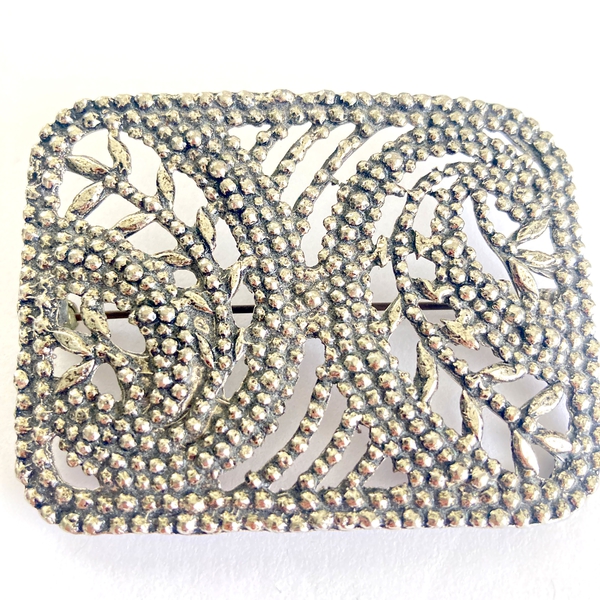 Steel-cut jewelry was fashionable in the Victorian era. The look was quite artistic, so it was recreated later on with molded pot metal made to look similar. It was cheaper and much faster to produce and looked passable. It was made both before and after WWII, but not during the war due to restrictions on metal. This brooch is rather large, clearly meant to make a statement.
Steel-cut jewelry was fashionable in the Victorian era. The look was quite artistic, so it was recreated later on with molded pot metal made to look similar. It was cheaper and much faster to produce and looked passable. It was made both before and after WWII, but not during the war due to restrictions on metal. This brooch is rather large, clearly meant to make a statement.
Faux Steel Cut Brooch, $19.95
-Pam, Vintage Renude
Antique Reverse Painted Tinfoil Art
This is a fabulous example of tinsel foil art, which is made by placing crinkly metallic foil under a protective surface of reverse-painted glass. It is undated but appears to be from the Victorian era. The best thing is that the collector we acquired it from documented the foil used to construct the painting before framing it. El Producto Cigar wrappers have never looked so good.
Early Floral Tinsel Foil Art, $125
-Linda, Selective Salvage
1970s Unitog 500 Special Coverall
I generally do not purchase clothing for resale at the flea market. When I saw this tumble out of the plastic bag onto a tarp, I headed straight towards it. I love the idea of a coverall to protect your clothing. This would be perfect for a musician of the right stripe or artist or for anyone who wants to make a job easier on your own clothing. It was very close to new even though it was from the 1970s. I did not enjoy the fact that it smelled musty, so I washed it by hand and it was as you see it now. Union made in the USA.
Navy Blue Coverall, Medium, Made in the USA, $77.99
-Mary Ellen, Aunt Hatties Attic
Fostoria American Low Footed Water Glasses
Fostoria American was a long lived vintage glass pattern, in production from 1915-1982. You’ll find it in all the expected forms of tableware, but you’ll also find humidors, hair receivers, puff boxes, ice buckets, trinket dishes and more. Jeannette Glass made a less expensive competing pattern, Cube, from 1929-1933. If you compare a piece of each, the Fostoria is easy to identify. It’s color is crystal clear, the molding is crisp and the mold lines are smooth. Cube is faintly yellow when held up to the light.
Because so much Fostoria American was made, there’s lots on the vintage market, so it’s easy to replace a piece that breaks and prices are good. Although these are technically water glasses, they would look amazing filled with colorful cocktails, iced tea, lemonade or cranberry juice.
Set of 8 Fostoria American Low StemWwater Glasses, $72.
-Laurie, NextStage Vintage
That’s a wrap on this week’s fresh to market vintage. We have some serious lust in our heart for those coveralls. Imagine getting set loose on them with embroidery floss…
You don’t have to imagine what our posts are every week. If you subscribe, you’ll get one email a week with links to all the previous week’s posts. And you’ll never get a smidge of spam; we pinky swear it!

